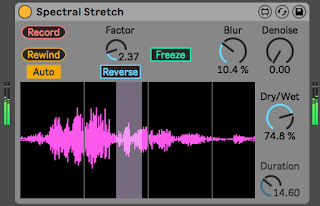The Physics of Music & Sound at Harvard
Next week, Spring courses start at Harvard University. I am very excited to be a Head Teaching Fellow for the course The Physics of Music and Sound, taught by Professor Eric Heller. Eric Heller is a true sound lover, but his interests cross many boundaries, as you can check on the Heller Group page.
A Gen Ed course
All incoming students at Harvard College must complete, over the course of their undergraduate education, one letter-graded course in each of the eight categories in the Program in General Education. One goal is to ensure that the undergraduate education encompasses a broad range of topics and approaches. The Physics of Music and Sound are in the category Science of the Physical Universe.
As Pr. Heller says in the course syllabus: In keeping with the new GenEd philosophy, the class will be made as participatory as possible. Discussions, live demonstrations of experiments, student demonstration of voice and instruments, computer experiments that you can also easily do, peer instruction and PRS “clicker” participation are all part of the experience.
Check the course trailer on the Harvard General Education web site.

We'll study - and experiment with - sirens!
Final projects
A hands-on approach to learning is also implemented by the presence of final projects for all students. Replacing more traditional exams, the projects will be the occasion for the students to turn to their special interests. The students will choose projects from a list, or come up with their own (with approval of the teaching staff). The propositions in the syllabus are already very exciting, for instance:
- Acoustical consultant - coloration of sound as function of position in room, objects in room, proximity to walls etc.; ambient sound, echo studies, reverberation time. Measure, analyze, and offer opinions on concert halls and other soundspaces.
- Noise: how is it generated? e.g. rustling or crushing paper, tire noise, wind turbulence, etc. Related: the sound of things breaking: a twig, glass, rips (paper, foil, cloth) etc. What are the technologies/possibilites for cutting noise off at its source; of reflecting or attenuating on its journey, or for canceling it before it enters our ears? May include investigations of noise levels and noise regulations near Harvard: start with the shuttle busses!
- Building of an experimental musical instrument or sound generation machine (e.g. voice mimic) - explain its principles, demonstrate and play it (or them) for the class.
- Sound in technology and medicine: ultrasound imaging, sonar (side scanning imaging), noise cancellation technology, imaging with ambient sound (the analog of imaging with ambient light). Principles of studio acoustics with examples.
- Scientific historian: following the traces of Wallace Clement Sabine at Harvard, including mastering his discoveries of the early 1900’s.
I'm looking forward to helping out all the students in their discovery of the Physics of Music & Sound. Surely, my studies at the National Institute for Applied Sciences in Lyon, as well as my experience in electronic music will come handy. But as importantly, and thanks to the open structure of the course, I know that I am going to learn a lot: the world of music and sound is so vast!



This sounds like a great course!!
ReplyDelete